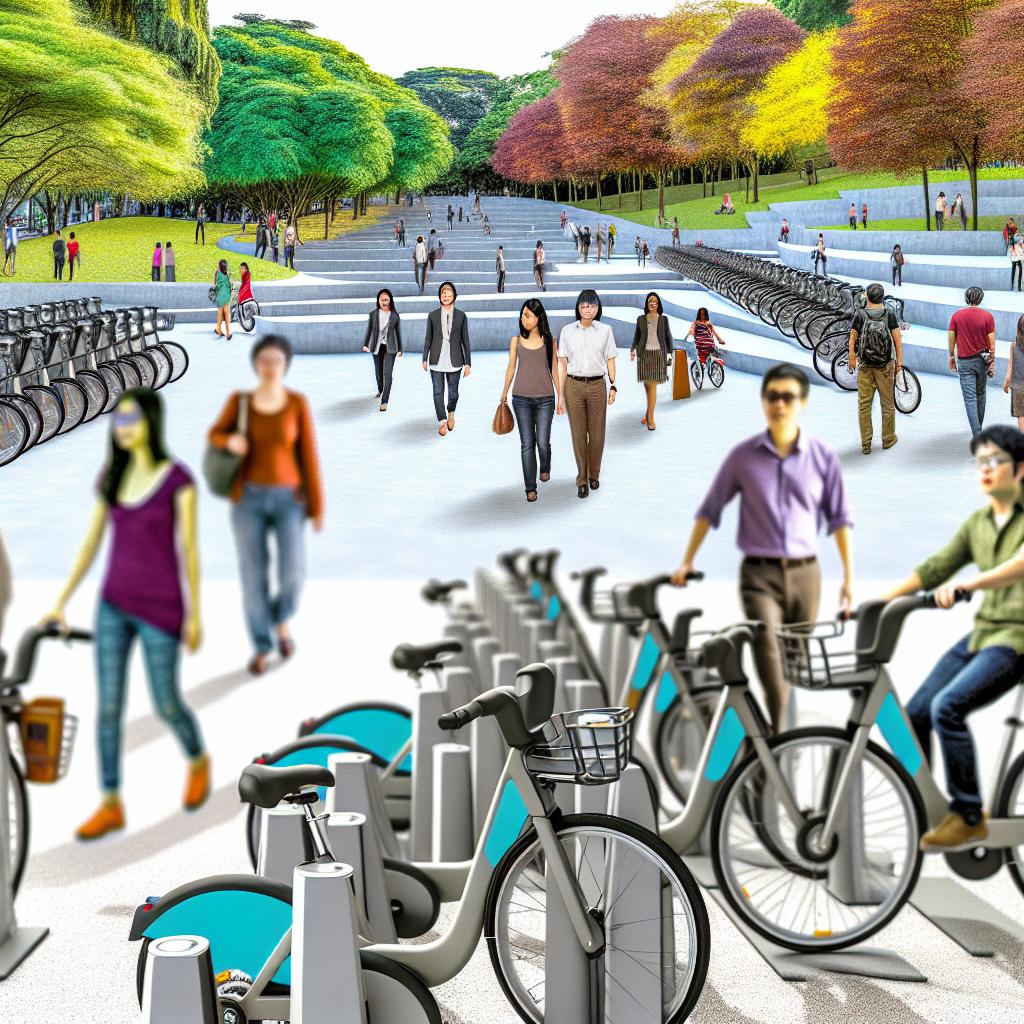Introduction to Vélib’ Bike-Sharing System
The Vélib’ bike-sharing system is a pivotal development in modern urban transportation, serving Paris and its neighboring areas since 2007. This system offers both residents and tourists an eco-friendly and efficient alternative to traditional forms of transport. As urban centers continue to grapple with traffic congestion and pollution, Vélib’ presents a practical solution by encouraging cycling, thus minimizing the city’s carbon footprint.
Operational Mechanism
Vélib’ stations are intricately woven into the fabric of Parisian streets, strategically located to ensure smooth and convenient access for commuters. Whether you are a daily commuter or a visitor wishing to soak in the city’s charm, Vélib’ accommodates both short-term rentals and long-term subscriptions. The process has been designed with user-friendliness in mind. Utilizing either a credit card or a Vélib’ card at station-mounted terminals, users can easily secure a bicycle and start their journey. Upon concluding the ride, the flexibility of returning the bike to any station underscores the system’s convenience.
By offering a streamlined rental and return process, Vélib’ facilitates spontaneous and planned travel, making it easier to incorporate cycling into daily life. To delve deeper into how the system operates, consider exploring the official Vélib’ website for comprehensive guides and FAQ.
Types of Bicycles
To cater to the diverse needs and preferences of users, Vélib’ provides two primary types of bicycles. The Vélib’ Classique bicycles are standard, non-electric bikes that appeal to cycling enthusiasts seeking exercise or a leisurely ride. For those who prefer an easy ride, the Vélib’ Électrique bikes incorporate electric assistance, proving invaluable for longer trips or tackling Paris’s inclines with minimal effort.
The distinct offerings ensure that the system remains inclusive and appealing to a broad spectrum of users, encompassing different age groups and physical capabilities. Choosing the right bicycle can enhance the user experience, promoting a greater shift towards cycling as a preferred mode of urban travel.
Sustainability and Environmental Impact
Central to Vélib’s mission is its alignment with environmental sustainability goals. The system promotes cycling as a key solution to urban pollution, aiming to lower the dependency on motor vehicles and curtail their resultant carbon emissions. As a city scarred by pollution akin to many urban centers globally, Paris benefits from Vélib’s city-wide adoption as part of its sustainable urban mobility initiatives.
Through reduced vehicle emissions and a healthier urban environment, Vélib’ exemplifies how cities can commit to environmental stewardship while addressing practical transportation needs. The system serves as a model for integrating green initiatives within city infrastructures, presenting strides in creating cities that are both livable and sustainable.
Challenges and Ongoing Developments
Despite its inventive model and significant successes, the Vélib’ system is not without its challenges. Regular maintenance remains crucial in ensuring that bicycles are always in optimal condition for use. Theft and vandalism pose ongoing concerns, necessitating robust protective measures.
Another challenge lies in maintaining a balanced distribution of bikes across stations, which is essential for user satisfaction. The technology employed in real-time tracking systems enables proactive management of these issues, ensuring that bikes are available when and where they are most needed.
To keep pace with urban growth and user needs, Vélib’ is continually evolving, with investments in technology and service improvements. Updates such as incorporating advanced bicycles, enhancing station infrastructure, and optimizing logistical operations reaffirm the system’s commitment to efficiency and user satisfaction. For the latest on these enhancements, a visit to the Vélib’ Métropole website provides insights into current initiatives and future plans.
Conclusion
The Vélib’ bike-sharing system stands out as a forward-thinking solution to some of the pressing challenges of urban mobility. By merging convenience with sustainability, it advocates for a greener and more enjoyable way to navigate the city’s streets. As cities worldwide confront similar transportation challenges, Vélib’s successful model could serve as inspiration for adopting sustainable mobility solutions elsewhere.
The ongoing evolution of Vélib’ will be instrumental as cities strive for balanced, efficient, and environmentally conscious growth. Understanding and supporting these systems contribute significantly to the global movement towards sustainable urban living. With continuous improvement and innovation, Vélib’ not only offers Paris a pragmatic avenue for meeting transportation needs but also paves the way for shaping sustainable city futures.










